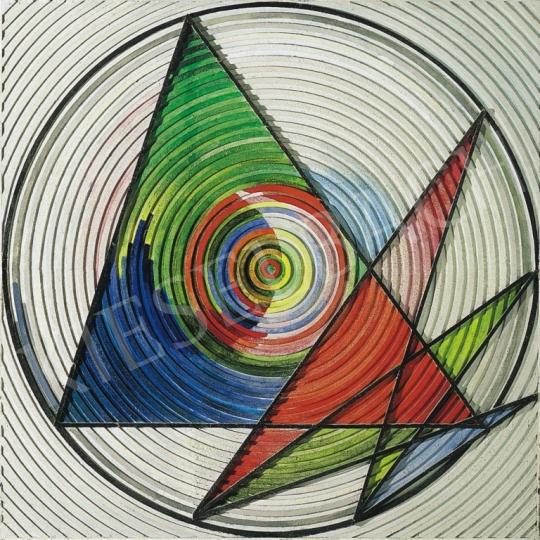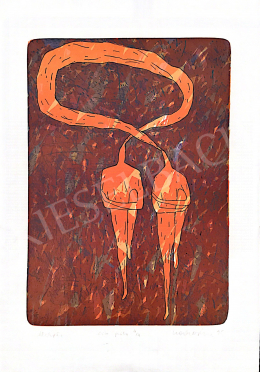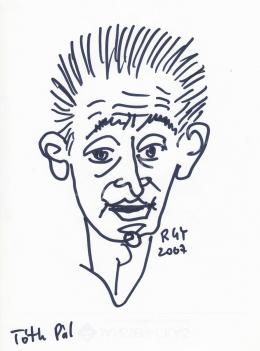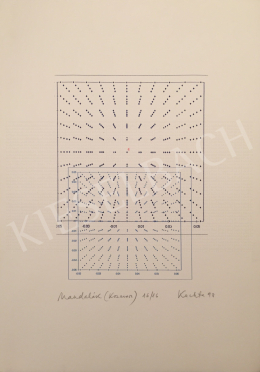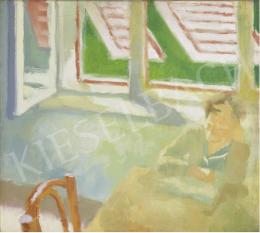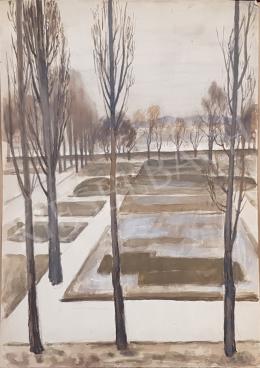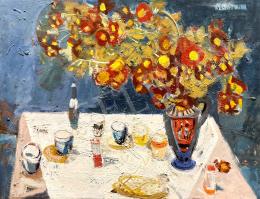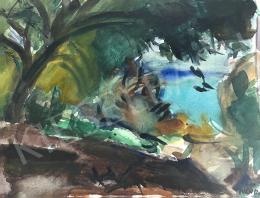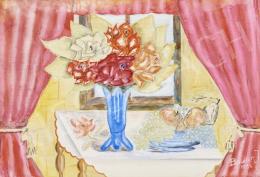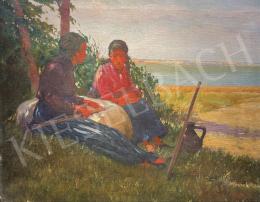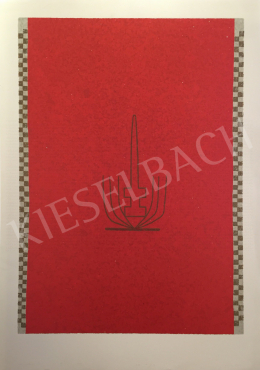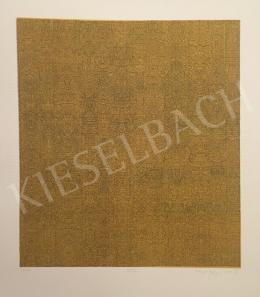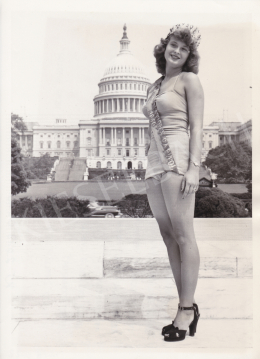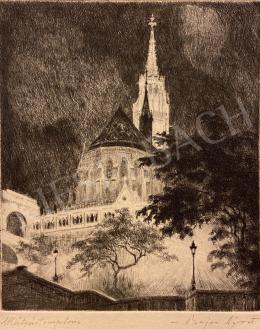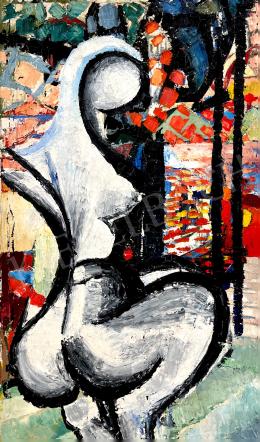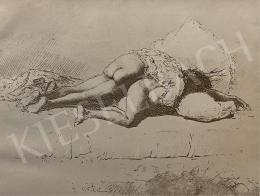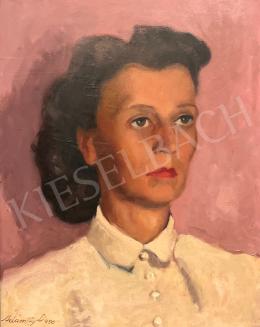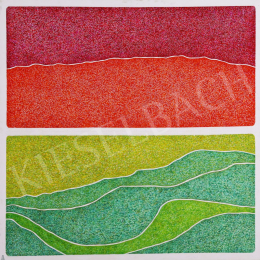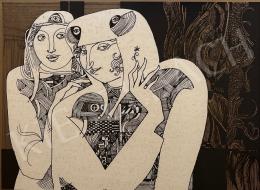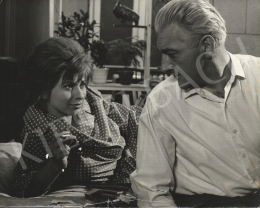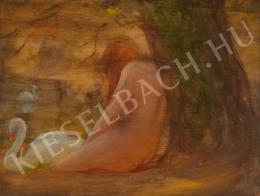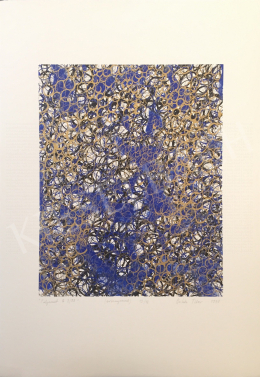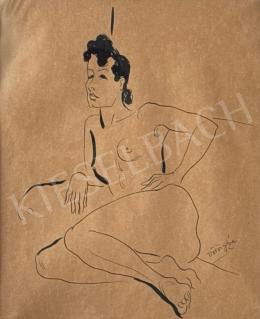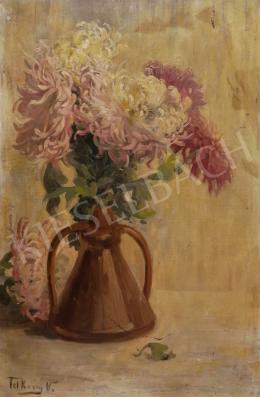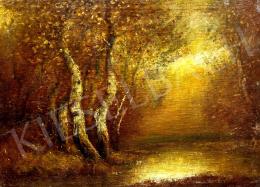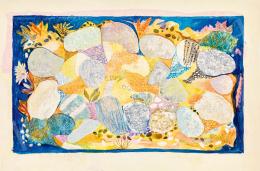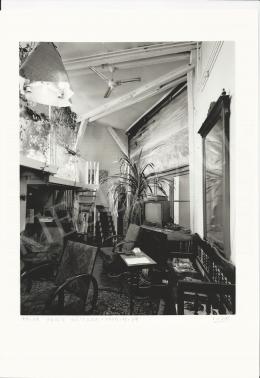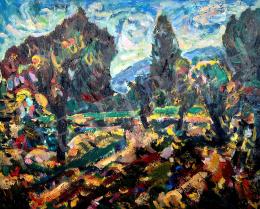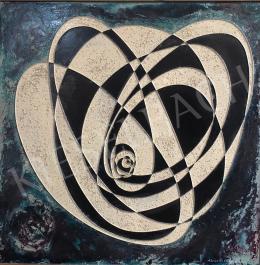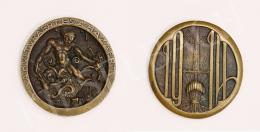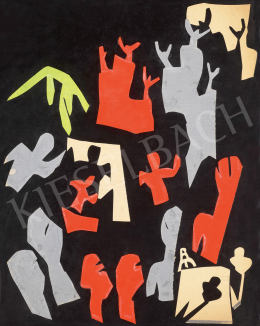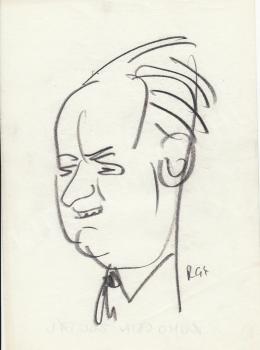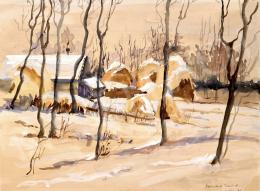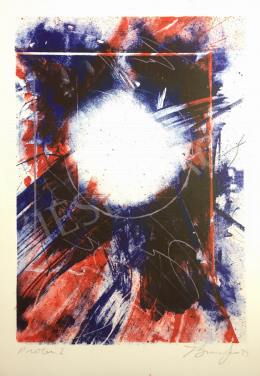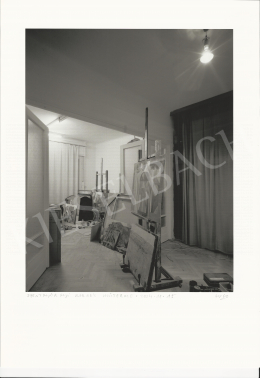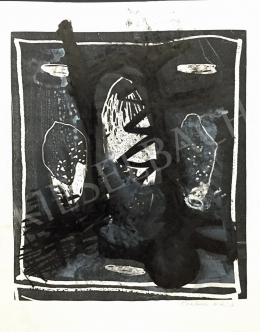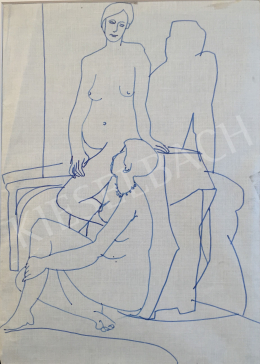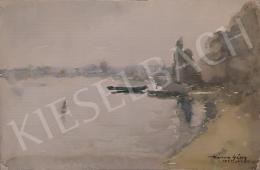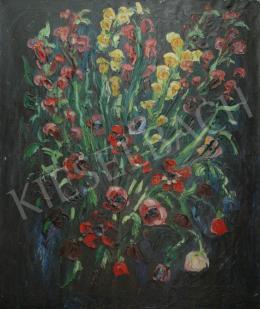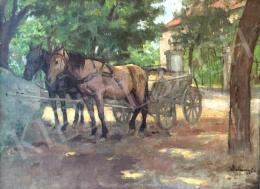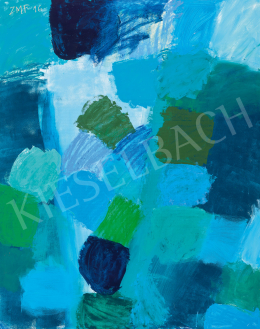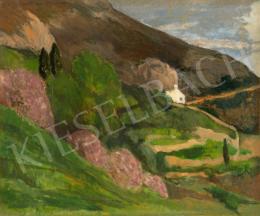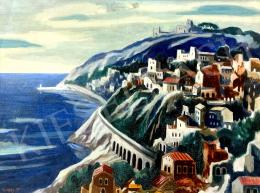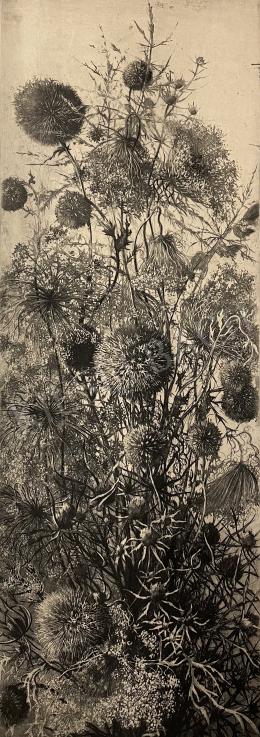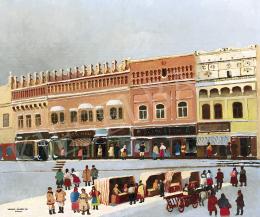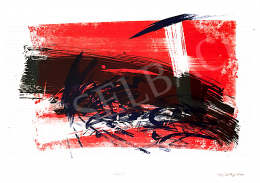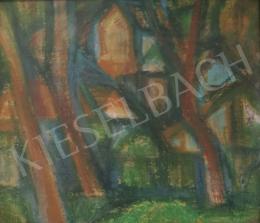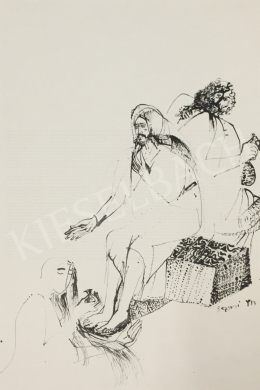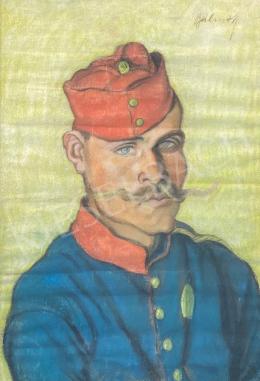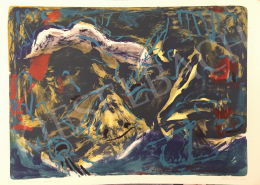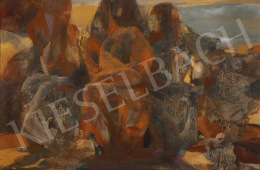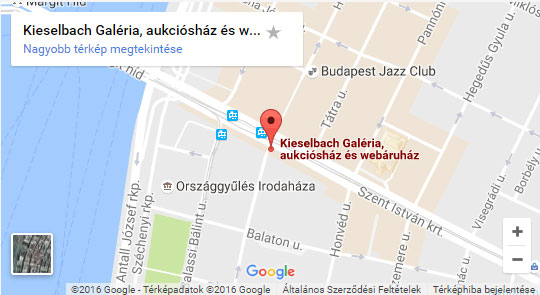On show in Wille Zur Form. Ungegenstandliche Kunst
1910-1938 in Österreich, Polen, Tschechoslowakei und
Ungarn. 1933
Bibliography:
Prinner: le livre des Morts des Anciens Egyptiens,
Párizs, 1944
Prinner: Picasso, Párizs, 1956
Prinner 1965 parle de Prinner 1935 (exhibition
catalogue), Párizs, 1965
Le tarot selon Prinner, Párizs, 1972
Anton Prinner 1902-1983 (exhibition catalogue),
Párizs, 1985
It is no exaggeration to say that Prinner is an enigmatic artist. Her life and art both prove mysterious. She was born in Budapest on new years eve in 1902, but left Hungary at the age of 26, settling in France, where she painted all her life through. She studied painting at the College of Fine Arts in Hungary, but only after moving to France did she become an artist. Up to now she hasn't had a show dedicated solely to her work in Hungary, and apart from two partial exhibitions in 1924 and 1970 in our country, Hungarian art history has had little knowledge of her. Neither can she be called an acclaimed artist in France, despite her numerous exhibitions there. Rather than in the quality of her work, the reason for this ignorance is to be found in her reclusive lifestyle and consciously mysterious
personal growth. Her circle of friends included people like Pablo Picasso, Viera da Silva and André Breton, but these artists may never have learnt that she had begun her career as Prinner Antónia. We have no idea why and when she decided to change her identity - both in terms of personal records and sex - but it is certain she kept to this decision until her death. In Hungarian as well as in French dictionaries of art, she still figures as a man. This might be the reason she decided to change sexes, judging male identity more appropriate to form a reassured basis in arts and to be one day listed in print, as she was, among other artists.
In 1926 or 27 or 28 (scarce as they are, biographies differ on dates as to her debut), after arriving in Paris, she stopped producing art for several years. She studied occult sciences, esoteric teachings and mystic philosophy, whose influence stayed with her all
along her would-be carrier. During her long and restless life, she experimented with a number of techniques in her work, but material and form were always subordinated to spiritual activity in search of superior truths. At the beginning of the '20s she learnt how to engrave copperplate in Hayter's Parisian atelier, then, from 1932 through 1937, she turned to relief paintings. From 1939 on her abstract compositions conceived under the realm of constructivism became strange, surrealist and figurative statues. These anthropomorphous, organic statues of granite and marble saw two successful exhibitions, one in 1942 in Jeanne Bucher's gallery, the other in 1945 in the famous Pierre Loeb gallery. In 1940 she completed one of her major works, a graphic illustration to Le Livre des Morts des Anciens Egyptiens coupled with commentary on the occultist opus magnum, the Egyptian Book of the Dead. In 1950 she went on to ceramics and during 15 consecutive years she made monumental ceramics influenced mainly by Picasso.
'Circular composition' is one of the most outstanding examples of Prinner's constructivist period, which lasted from 1932 to 1937. Judging by the technique of the painted relief and its geometric emphasis, we could stress the influence of Russian and international constructivism, but it is more appropriate to draw a parallel between this Pinner and
Piet Mondrian's neoplasticism. Reference to it is to be found on the reverse side of the painting, whose inscription says: 'The eye or target'. These words give little practical clue and even less concretion to the work itself. Given Prinner's fragmentary confessions, it is difficult to reconstruct the Mondrian system, and we are but left to guess what the
meaning of her works are. The circle and triangles might symbolize superior spiritual entities, and as to he eye itself, we should think of Egyptian mythology.
Hornyik, Sándor






